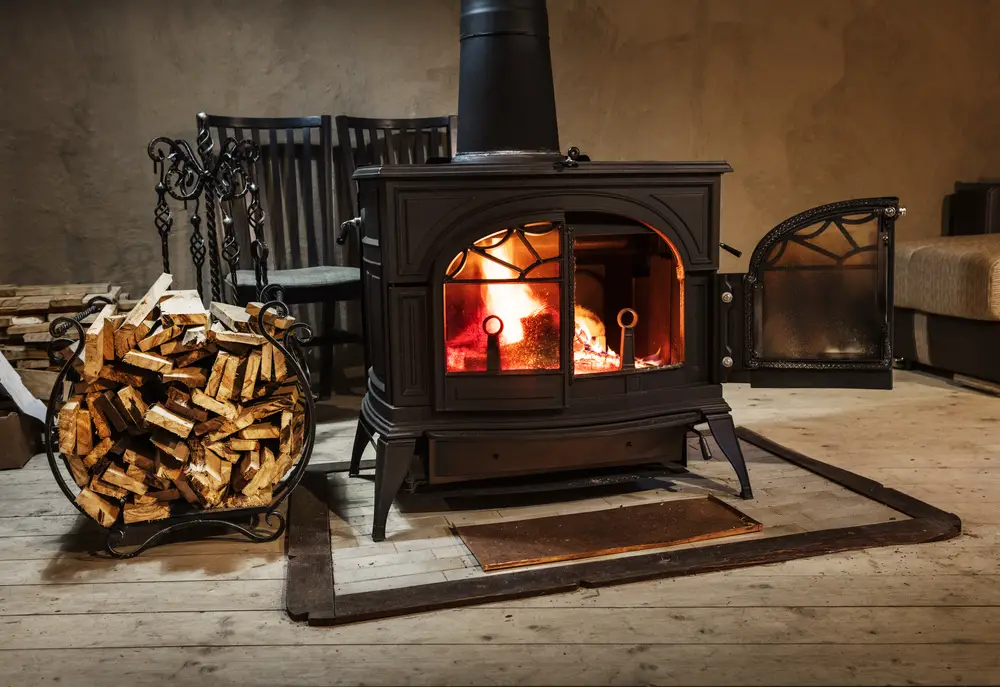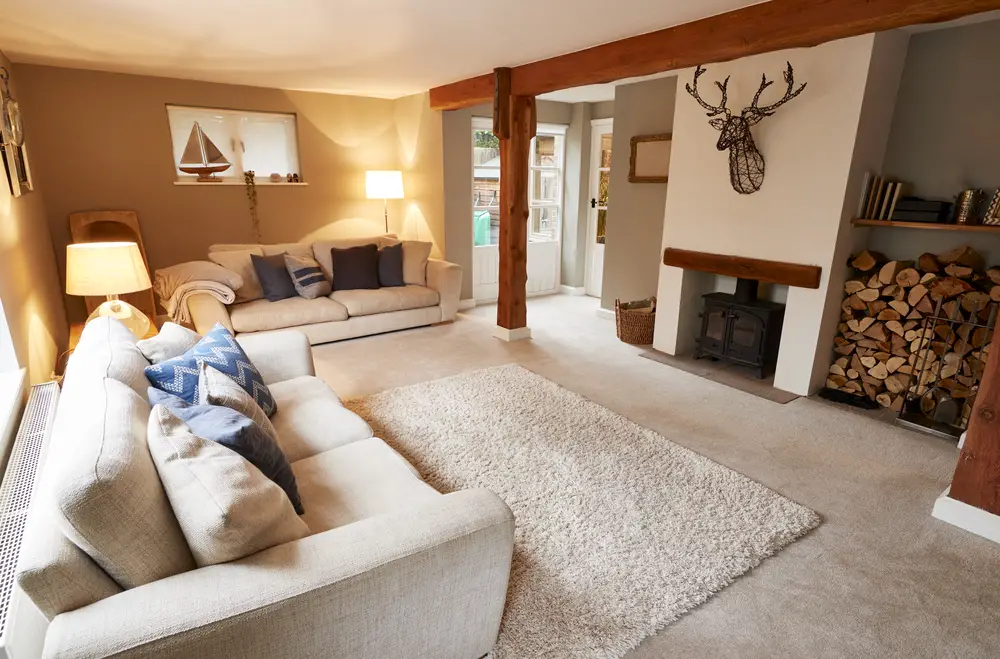Discovering whether it’s feasible to have a wood-burning stove in a flat requires an exploration of key considerations and practical solutions.
Yes, you can have a wood burning stove in a flat even if the flat does not have a chimney. For this, you will have to install a twin wall flue system through the wall or roof of your building. For leasehold flats, specific regulations apply for solid fuel-burning heating appliances.
Curious to know more about the process of installing a wood-burning stove in a flat and discuss the rules and regulations that may apply in your case? Read on to find out the practical solutions and regulations.

Can you have a wood-burning stove on the second floor?
Yes, you can have a wood-burning stove on the second floor, but you have to take a few important things into consideration. To begin with, make sure the stove is connected to a functional and well-insulated chimney—either a conventional chimney or a twin wall chimney flue system. The procedure may not be easy in some buildings.
Next, you have to get your wood stove installed on a hearth made of a non-combustible material. The floorboards used upstairs should also comply with the building regulations in your country or locality. In some cases, the floorboards may need to be reworked.
Then, in order to avoid the risk of carbon monoxide poisoning, the space must be well-ventilated. This aspect requires particular attention because upstairs rooms often lack sufficient ventilation.
To ensure the safety of you and your neighbors, get your space inspected by a professional. The installation of your wood stove should also be carried by a professional.
Can you have a wood-burning stove in a leasehold flat?
The ownership of a leasehold flat is governed by the lease. The leaseholder owns the flat for a certain number of years. You can use a wood-burning stove in a leasehold flat if you comply with the specific regulations. The exact arrangements should be checked by your solicitor.
In general, each solid fuel-burning stove should have a separate chimney flue. Apart from that, other regulations for wood-burning stoves should also be followed. If a wall is covered by a plasterboard, you cannot install your wood-burning stove directly next to your plasterboard. An A1-rated heat-resistant shield must be used to protect the wall.
Keep an air gap of 12mm between the heat shield and any combustible material. Make sure wooden fire surrounds and timber beams are not too close to the wood stove flue pipe. Keep a gap of at least 15 inches.
In the UK, the law requires you to get a carbon monoxide detector installed in the room where your wood stove is installed. Although the risk of CO poisoning is low if the stove is professionally installed, a CO detector is a must.
Does a wood-burning stove need room ventilation?
A supply of air is necessary for combustion. If the room in which your wood-burning stove is installed has no supply of air, starting and maintaining a fire will be hard or even impossible, and the room will be filled with smoke. With no source of air, there is no upward air movement and therefore the smoke does not make its way out through the chimney.
There is a way to know if the room has adequate ventilation. Open a window and see if it has an effect on the size of the flame. If it burns more keenly, the room needs more ventilation. The air permeability of your house determines whether you need an additional room vent to use the stove more efficiently.
In a house with an air permeability of 5 m3/hm2 or more, no additional ventilation is needed for a 5kw-wood burning stove or a smaller one. For a stove over 5 kw, each additional kw requires an additional 550 mm2 of ventilation. A 7kw-stove, for example, would require 1650 mm2 of ventilation.
A home built after 2008 usually has a permeability of 5 m3/hm2 or less. In such a home, 2,750mm2 of ventilation is required for a 5 kw-stove. For a larger one, add 550 mm2 for each additional kw.
If you need a room vent, place it close to the stove. Depending on the layout of the room, you can place the vent in the floor or in a wall.

Can I complain about my neighbors’ wood-burning stove?
If smoke emitted from your neighbor’s chimney interferes with your day-to-day life, you have a legitimate ground for objection. In fact, over the past few years, local councils in England have received thousands of complaints about emissions from log burners.
As per the regulations in the UK and USA, homeowners can burn only seasoned firewood with a moisture content of no more than 20%. Very little smoke is emitted when sufficiently seasoned wood is burned in a modern wood-burning stove.
If you strongly feel that the smoke coming out of your neighbor’s wood-burning stove is a nuisance for you and your family members, you can contact your local council by phone or via email. They will investigate your grievances and take necessary steps.
Whenever the problem occurs, make a record so that you can prove that the fumes are actually a nuisance. When making a complaint, specify the property the smoke is coming from. The council will contact the property owner and inform them of the complaint. They will be obliged to limit the use of the appliance.
Can I have a wood-burning stove in a new home?
Newly built buildings these days are airtight due to high levels of insulation. These buildings have no chimneys. But, as we have stated, you just have to get a twin wall flue system installed before you can use a wood-burning stove in your flat. Of course, using an open fire in a modern flat is not recommended.
Modern EcoDesign stoves come in visually appealing designs that go very well with modern, shiny flats. These stoves meet stringent standards of efficiency and air quality. When buying a wood-burning stove, be careful about the size of the appliance. And when using it, be sure to burn seasoned wood only.
With all the technological developments, a modern wood-burning stove is still a combustion-based appliance, and that’s why many environmentally conscious homeowners replace their wood stoves with heating appliances that emit no smoke at all. A gas stove, an electric stove, and a heat pump are some good examples.
Air source heat pumps, just like ground source heat pumps, are remarkably environmentally friendly. And they work well with underfloor heating and radiators. Any of these options can be good for you if you are living in a place where firewood is not easily available. These heating appliances are cleaner than wood stoves, and very easy to use.

Conclusion
A modern wood-burning stove can perfectly complement a neat and clean flat. The absence of a chimney in your building does not mean that you cannot enjoy the advantages of a wood stove. You just have to get a twin wall flue system installed.
As long as you burn properly seasoned wood and ensure the maintenance of the stove, it’s a very efficient appliance to keep your flat warm and cozy. It all comes down to choosing the right stove and using it responsibly.
